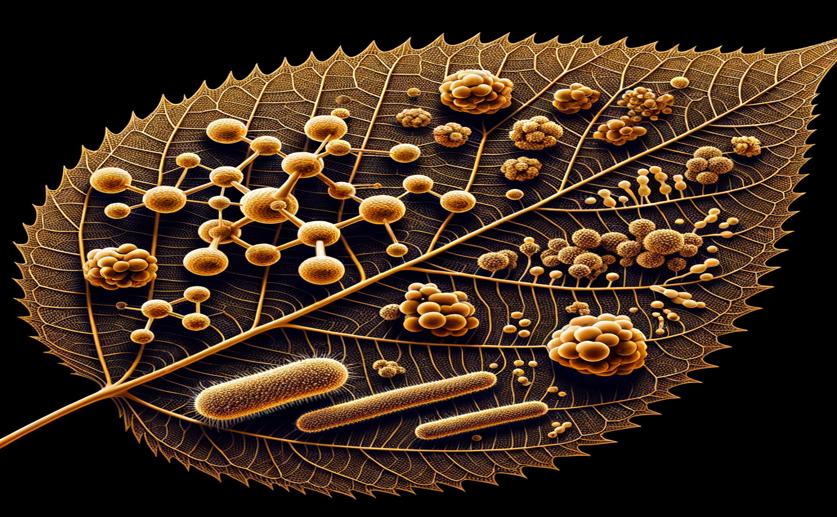
Surfactants Help Bacteria Hitchhike on Leaves
Greg Howard
30th April, 2024

Image Source: Natural Science News, 2024
Key Findings
- In a Berlin study, bacteria Pantoea eucalypti 299R grew better with surfactant-producing Pseudomonas sp. FF1 on surfaces
- Surfactants from Pseudomonas helped Pantoea bacteria spread and access nutrients on swarming agar plates
- On plant leaves, Pantoea showed increased growth in the presence of surfactant-producing Pseudomonas, indicating a beneficial interaction
References
Main Study
1) Hitching a Ride in the Phyllosphere: Surfactant Production of Pseudomonas spp. Causes Co-swarming of Pantoea eucalypti 299R
Published 29th April, 2024
https://doi.org/10.1007/s00248-024-02381-4
Related Studies
2) Plant-bacteria associations are phylogenetically structured in the phyllosphere.
3) Microbial life in the phyllosphere.
4) Synthetic microbiota reveal priority effects and keystone strains in the Arabidopsis phyllosphere.
5) Phyllosphere microbiology: at the interface between microbial individuals and the plant host.



 29th January, 2024 | Greg Howard
29th January, 2024 | Greg Howard